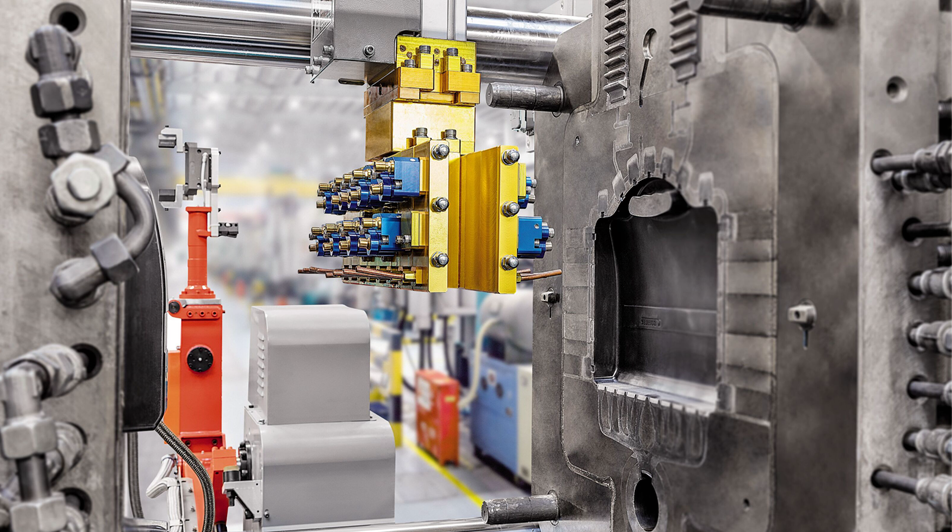Die casting is a widely used manufacturing process that involves injecting molten metal into a mold to create complex shapes with high precision and accuracy. It offers several advantages over other manufacturing methods, including excellent dimensional control, high production rates, and the ability to produce intricate details. However, to fully leverage the benefits of die casting, it is crucial to understand and apply the essential principles and techniques of die casting design. In this article, we will explore the key aspects of die casting design that are vital for achieving optimal results.
One of the fundamental principles of die casting design is the selection of the appropriate metal alloy. The choice of alloy depends on various factors, such as the desired mechanical properties, corrosion resistance, thermal conductivity, and cost. Commonly used die casting alloys include aluminum, zinc, magnesium, and copper-based alloys. Each alloy has its unique characteristics and considerations, and the designer must carefully evaluate them to ensure the suitability for the intended application.
Another critical aspect of die casting design is the design of the mold or die. The die consists of two halves, the fixed half (cover die) and the movable half (ejector die), which are precision machined to create the desired shape. The mold design should consider factors such as parting line location, draft angles, wall thickness, fillets, and radii. Proper consideration of these factors ensures the ease of ejection, reduced porosity, and improved dimensional accuracy of the cast part.
Draft angles are an essential consideration in die casting design as they facilitate the smooth ejection of the part from the mold. Draft angles are the taper applied to the vertical surfaces of the part to allow it to release easily without getting stuck in the mold cavity. The recommended draft angles generally range between 1 to 3 degrees, depending on the complexity of the part geometry. Insufficient draft angles can result in part sticking, while excessive draft angles can lead to flashing or excess material on the part\’s surface.
Wall thickness is another critical factor in die casting design. It affects the part\’s strength, cooling rate, and overall manufacturing cost. A uniform wall thickness is desirable to ensure consistent material flow during the casting process and minimize the risk of defects such as shrinkage or warpage. It is crucial to avoid abrupt changes in wall thickness, as they can cause uneven cooling and result in internal stress and dimensional instability.
Fillets and radii are used in die casting design to reduce stress concentrations and improve the overall strength of the part. Sharp corners should be avoided, as they can act as stress risers and lead to premature failure of the part. The size of the fillets and radii should be carefully determined based on the material properties and the intended application of the part.
The gating and runner design is another critical aspect of die casting design that directly affects the quality of the cast part. The gating system allows the molten metal to flow into the mold cavity, while the runner system helps distribute the metal uniformly. The designer must ensure proper gate location, size, and design to minimize turbulence, air entrapment, and porosity in the cast part. Additionally, the runner system should be designed to minimize the formation of cold shuts or flow marks.

Simulation tools are invaluable in die casting design as they allow designers to visualize and optimize the process before actual production. These tools enable the prediction of potential defects, such as air entrapment, shrinkage, or porosity, and provide insights into the flow behavior of the molten metal. By iteratively refining the design using simulation, designers can minimize the risk of defects and optimize the casting process to achieve the desired part quality.
In conclusion, mastering the art of die casting design requires a deep understanding of the essential principles and techniques. The selection of the appropriate alloy, mold design considerations, draft angles, wall thickness, fillets, gating, and runner design are all crucial factors that contribute to the success of the die casting process. By applying these principles and utilizing simulation tools, designers can achieve optimal results, including high-quality cast parts with excellent dimensional control and minimal defects.
-

- Die cast magnesium parts laptop housing cover D
-

- Magnesium thixomolding parts UAV housing
-

- Thixomolding parts & components cell phone middle board processed
-

- Ultralight suspension fork for MTB
-

- Magnesium Aluminium alloy die casting parts Chain cover for automotive
-

- Thixomolding parts & components mobile phone middle board processed

 0086-750-5616188
0086-750-5616188 +86 13392089688
+86 13392089688 sales@zhongmei-tech.com
sales@zhongmei-tech.com







